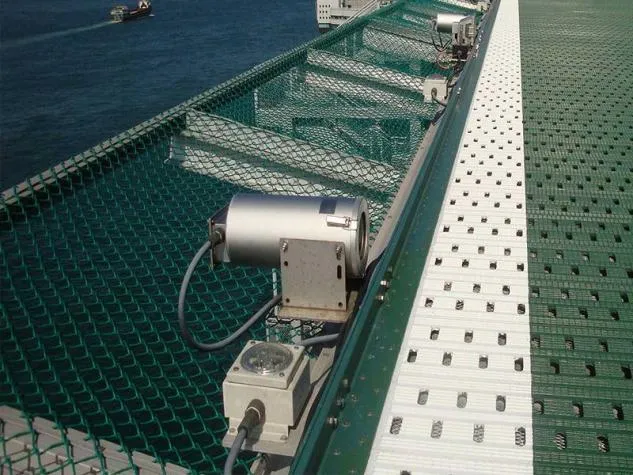- Industrial zone, South of Anping Town, Hengshui, Hebei, China.
- sales@hfpetromesh.com
- +86-18931809706
 Afrikaans
Afrikaans  Albanian
Albanian  Amharic
Amharic  Arabic
Arabic  Armenian
Armenian  Azerbaijani
Azerbaijani  Basque
Basque  Belarusian
Belarusian  Bengali
Bengali  Bosnian
Bosnian  Bulgarian
Bulgarian  Catalan
Catalan  Cebuano
Cebuano  Corsican
Corsican  Croatian
Croatian  Czech
Czech  Danish
Danish  Dutch
Dutch  English
English  Esperanto
Esperanto  Estonian
Estonian  Finnish
Finnish  French
French  Frisian
Frisian  Galician
Galician  Georgian
Georgian  German
German  Greek
Greek  Gujarati
Gujarati  Haitian Creole
Haitian Creole  hausa
hausa  hawaiian
hawaiian  Hebrew
Hebrew  Hindi
Hindi  Miao
Miao  Hungarian
Hungarian  Icelandic
Icelandic  igbo
igbo  Indonesian
Indonesian  irish
irish  Italian
Italian  Japanese
Japanese  Javanese
Javanese  Kannada
Kannada  kazakh
kazakh  Khmer
Khmer  Rwandese
Rwandese  Korean
Korean  Kurdish
Kurdish  Kyrgyz
Kyrgyz  Lao
Lao  Latin
Latin  Latvian
Latvian  Lithuanian
Lithuanian  Luxembourgish
Luxembourgish  Macedonian
Macedonian  Malgashi
Malgashi  Malay
Malay  Malayalam
Malayalam  Maltese
Maltese  Maori
Maori  Marathi
Marathi  Mongolian
Mongolian  Myanmar
Myanmar  Nepali
Nepali  Norwegian
Norwegian  Norwegian
Norwegian  Occitan
Occitan  Pashto
Pashto  Persian
Persian  Polish
Polish  Portuguese
Portuguese  Punjabi
Punjabi  Romanian
Romanian  Russian
Russian  Samoan
Samoan  Scottish Gaelic
Scottish Gaelic  Serbian
Serbian  Sesotho
Sesotho  Shona
Shona  Sindhi
Sindhi  Sinhala
Sinhala  Slovak
Slovak  Slovenian
Slovenian  Somali
Somali  Spanish
Spanish  Sundanese
Sundanese  Swahili
Swahili  Swedish
Swedish  Tagalog
Tagalog  Tajik
Tajik  Tamil
Tamil  Tatar
Tatar  Telugu
Telugu  Thai
Thai  Turkish
Turkish  Turkmen
Turkmen  Ukrainian
Ukrainian  Urdu
Urdu  Uighur
Uighur  Uzbek
Uzbek  Vietnamese
Vietnamese  Welsh
Welsh  Bantu
Bantu  Yiddish
Yiddish  Yoruba
Yoruba  Zulu
Zulu
- Afrikaans
- Albanian
- Amharic
- Arabic
- Armenian
- Azerbaijani
- Basque
- Belarusian
- Bengali
- Bosnian
- Bulgarian
- Catalan
- Cebuano
- Corsican
- Croatian
- Czech
- Danish
- Dutch
- English
- Esperanto
- Estonian
- Finnish
- French
- Frisian
- Galician
- Georgian
- German
- Greek
- Gujarati
- Haitian Creole
- hausa
- hawaiian
- Hebrew
- Hindi
- Miao
- Hungarian
- Icelandic
- igbo
- Indonesian
- irish
- Italian
- Japanese
- Javanese
- Kannada
- kazakh
- Khmer
- Rwandese
- Korean
- Kurdish
- Kyrgyz
- Lao
- Latin
- Latvian
- Lithuanian
- Luxembourgish
- Macedonian
- Malgashi
- Malay
- Malayalam
- Maltese
- Maori
- Marathi
- Mongolian
- Myanmar
- Nepali
- Norwegian
- Norwegian
- Occitan
- Pashto
- Persian
- Polish
- Portuguese
- Punjabi
- Romanian
- Russian
- Samoan
- Scottish Gaelic
- Serbian
- Sesotho
- Shona
- Sindhi
- Sinhala
- Slovak
- Slovenian
- Somali
- Spanish
- Sundanese
- Swahili
- Swedish
- Tagalog
- Tajik
- Tamil
- Tatar
- Telugu
- Thai
- Turkish
- Turkmen
- Ukrainian
- Urdu
- Uighur
- Uzbek
- Vietnamese
- Welsh
- Bantu
- Yiddish
- Yoruba
- Zulu
metal grating price
Understanding Metal Grating Prices Factors and Trends
Metal grating is a crucial product widely used in various industries, offering safe, durable, and efficient solutions for flooring, walkways, drainage covers, and more. With applications in construction, manufacturing, and infrastructure, understanding the price dynamics of metal grating is essential for procurement professionals and business owners alike.
Several factors influence the price of metal grating, and being aware of these can help in making informed purchasing decisions. First and foremost, the type of metal used plays a significant role. Common metals include steel, aluminum, and stainless steel, each offering distinct advantages and price points. For instance, aluminum grating tends to be lighter and more resistant to corrosion, making it suitable for environments exposed to moisture. However, it is often more expensive than steel. On the other hand, steel grating, while generally more affordable, may require additional treatments or coatings to resist rust and corrosion, adding to the overall cost.
Understanding Metal Grating Prices Factors and Trends
The design of the grating also affects its price. Standard designs are generally more cost-effective than custom solutions. If a project requires specific dimensions or load-bearing capacities, the customization process can significantly raise the overall cost due to the additional materials and labor required.
metal grating price

Market demand and the economic climate also play crucial roles in determining metal grating prices. Fluctuations in raw material prices, such as steel and aluminum, can lead to varying costs in finished products. For instance, during periods of high demand for construction or infrastructure projects, the prices of metal grating may increase due to supply chain constraints. Conversely, when demand is low, prices may stabilize or decrease, providing potential savings for customers.
It's essential to consider installation and maintenance costs when evaluating the overall expenses associated with metal grating. While the initial purchase price may be an important factor, the total cost of ownership includes installation fees and the ongoing maintenance required to ensure longevity and safety. For instance, grating systems that require frequent cleaning or treatment may lead to higher maintenance costs over time.
Ultimately, to secure the best prices for metal grating, buyers should conduct thorough market research and consider multiple vendors. Requesting quotes from different manufacturers can help identify competitive pricing and uncover any potential discounts for bulk purchases. Additionally, understanding the specific needs of a project, including load requirements and environmental conditions, ensures that the right type of grating is selected, optimizing both performance and cost-efficiency.
In conclusion, the price of metal grating is influenced by several interrelated factors, from material selection and manufacturing processes to market demand and design specifications. By carefully considering these elements, buyers can navigate the complexities of the market and make educated decisions that align with their project goals and budget constraints.
-
Welded Steel Bar Grating: The Rugged Industrial Flooring Solution Built for Load and LongevityNewsJun.24,2025
-
Steel Walkway Grating: Reliable, Resilient, and Built for Every StepNewsJun.24,2025
-
Shale Shaker Screen for Sale: Optimize Drilling Efficiency with Precision Screening PowerNewsJun.24,2025
-
Shaker Screen for Sale: Elevate Your Drilling Efficiency with Durable Separation SolutionsNewsJun.24,2025
-
Press Locked Steel Grating: Industrial Strength with Precision Fit for Heavy-Duty ApplicationsNewsJun.24,2025
-
Perimeter Safety Netting: The Critical Safety Upgrade for Every HelipadNewsJun.24,2025